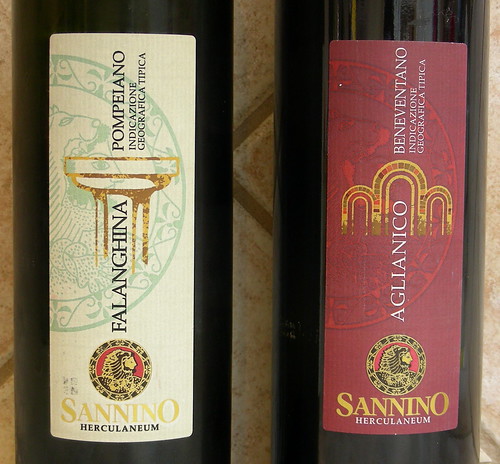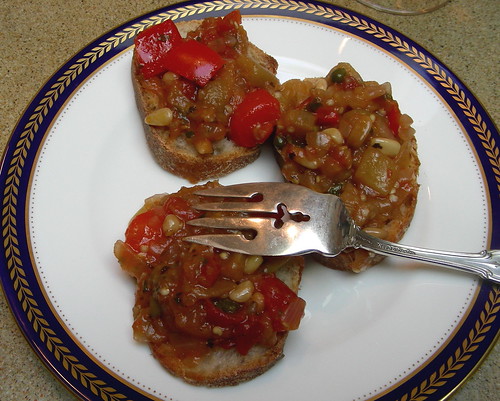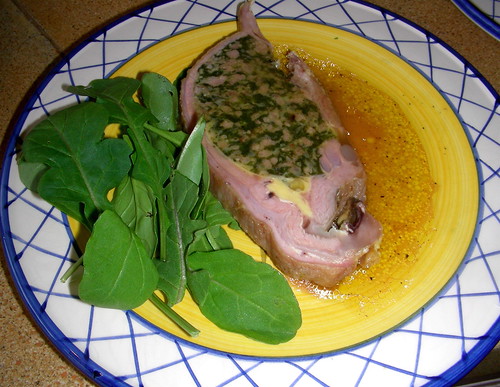
I just read a wonderful
story written by software engineer and writer Ellen Ullman. In her essay called
Dining with Robots, Ellen Ullman wonders how much pleasure robots could ever experience. She also worries that with our long working hours, our well organized life in which so many processes are automated, we may just become robots ourselves.
Everything started when she decided to make a
Beuf à la Parisienne, a recipe from Julia Child's
Mastering the Art of French Cooking, for dinner. This is a sauté of beef served with a cream and mushroom sauce. The book also recommends buttered green peas and a
good red Bordeaux to accompany the dish. While cooking that evening, she imagined having robots as guests for dinner.
Eventually, this may not be a fantasy anymore. According to
Dr. Cynthia Breazeal who works at MIT's Artificial Intelligence Laboratory, we will one day be able to build robots that can become socially intelligent machines, learning things as we learn them, through social interactions. Her team is currently developing the first robotic creature that takes an active interest in its world, and learns and develops over time. It
learns by trial and error and
remembers its mistakes, making incremental improvements. This is a cute little robot called Kismet who, like a child, is learning how to communicate a number of emotion-like processes such as happiness, fear and disgust.
For Ellen, having well behaved guest robots for dinner means that she will have to teach them many different things, and above all, explain what
a good red Bordeaux means.
”How to explain wine at all?“ she asks,
”You could spend the rest of your life tasting wine and still not exhaust its variations, each bottle is a little ecosystem of grapes and soils and weather, yeast and bacteria, barrels of wood from trees with their own soil and weather, the variables cross-multiplying until each glassful approaches a singularity, a moment in time on earth. Can a creature that does not drink or taste understand this pleasure? A good red Bordeaux!“One day, robots may become more like us and show human-like feelings. However, in our effort to quantify everything, even the pleasure of drinking wine, aren't we becoming more robot-like? We buy wine based on ratings, classifications, even
computerized wine matchmaking services. Wines have become numbers from which we compute means, medians and standard deviations in order to declare one vintage or wine region better than the other. I guess we trust numbers better than our own palate.
”Quand le vin est tiré, il faut le boire, surtout s'il est bon“ (When the wine is poured, you have to drink it, especially if it's good) says César, the jovial character in Marcel Pagnol's
Fanny Trilogy. Isn't it still the best way to enjoy a nice glass of wine?
Technorati tags: wine food & drink



 This is how I recently found two bottles that looked suspicious: a
This is how I recently found two bottles that looked suspicious: a  Then I tried the Geyser Peak. This Cabernet Sauvignon has always been known for its excellent quality-price ratio but not specifically for its ability to age. The wine had a deep red color that hardly showed any sign of age. On the nose, I found black currant and earthy aromas more typical of Bordeaux. On the palate, it was soft and elegant with hints of mushroom and chocolate flavors. Retasting it the day after, the wine was surprisingly even more delicious, exhibiting additional sweet raspberry flavors.
Then I tried the Geyser Peak. This Cabernet Sauvignon has always been known for its excellent quality-price ratio but not specifically for its ability to age. The wine had a deep red color that hardly showed any sign of age. On the nose, I found black currant and earthy aromas more typical of Bordeaux. On the palate, it was soft and elegant with hints of mushroom and chocolate flavors. Retasting it the day after, the wine was surprisingly even more delicious, exhibiting additional sweet raspberry flavors.
 Isn't it funny that a magnum size bottle seems always so festive? For some reason, the unusual size of the bottle makes the juice it contains more special and delicious.
Isn't it funny that a magnum size bottle seems always so festive? For some reason, the unusual size of the bottle makes the juice it contains more special and delicious.
 This weekend, we skiing at Tahoe. It snowed all day yesterday, and after half a day of ski and some snowshoeing, I was pretty wet and ready for a full, hearty wine.
This weekend, we skiing at Tahoe. It snowed all day yesterday, and after half a day of ski and some snowshoeing, I was pretty wet and ready for a full, hearty wine. 
 Well, I recently experienced my own Burgundy High. We were celebrating the New Year with our close friends Catherine and Pierre when Pierre decided to open the oldest bottle of his collection, a
Well, I recently experienced my own Burgundy High. We were celebrating the New Year with our close friends Catherine and Pierre when Pierre decided to open the oldest bottle of his collection, a 
 Actually, I didn't mean to buy the Martinborough Vineyard Pinot Noir. I had ordered a
Actually, I didn't mean to buy the Martinborough Vineyard Pinot Noir. I had ordered a  The
The 